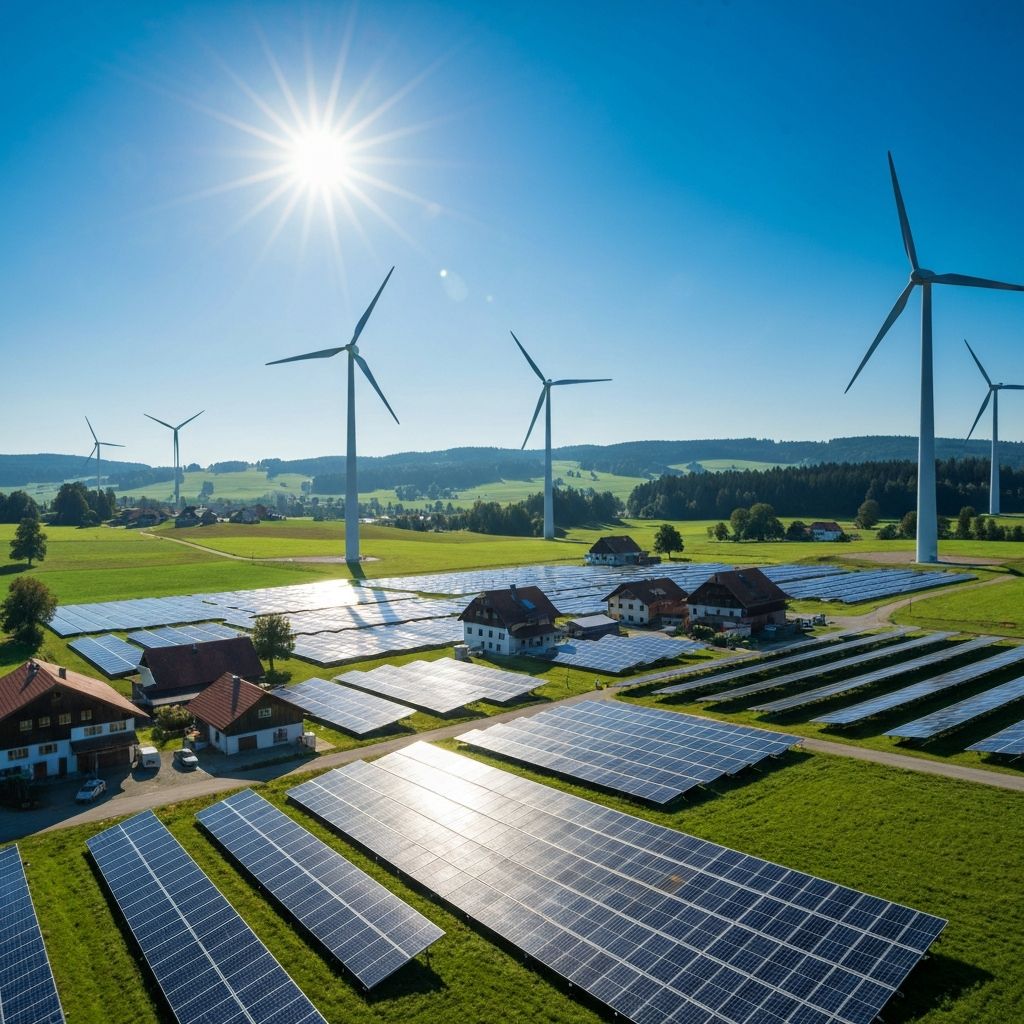The landscape of power generation is undergoing a fundamental transformation across Europe. Where centralized plants once dominated, a distributed network of smaller energy sources is emerging—rooftop solar, neighborhood battery systems, and community wind projects. This shift represents more than a technological change; it's a reimagining of how communities produce, store, and share electricity.
The movement toward decentralized energy isn't entirely new, but recent developments in storage technology, regulatory frameworks, and financing models have accelerated adoption. Understanding these changes helps clarify why local energy systems are capturing attention from policymakers, investors, and communities alike.
The Building Blocks of Local Energy
Micro-generation refers to small-scale renewable energy production, typically under 50 kilowatts. This includes residential solar panels, small wind turbines, and micro-hydro systems. The appeal is straightforward: generate power where it's consumed, reducing transmission losses and grid dependency.
What makes this approach increasingly viable is the dramatic decline in solar photovoltaic costs and improvements in inverter technology. Systems that were economically marginal a decade ago now offer reasonable payback periods, especially when paired with battery storage.
"Energy independence at the community level isn't just about sustainability—it's about resilience, economics, and local autonomy."
Storage technology has evolved in parallel. Lithium-ion batteries, benefiting from electric vehicle development, have become more affordable and efficient. Equally important are software platforms that optimize when to store excess generation and when to draw from batteries, maximizing self-consumption and grid stability.
Community Energy Models
Individual household systems represent one layer of this transition. Community energy projects take the concept further, pooling resources and infrastructure across multiple participants. These might include:
- Shared solar installations on municipal buildings or underused land
- Neighborhood battery systems that store excess generation from multiple sources
- Local energy cooperatives that manage production and distribution
- Micro-grids that can operate independently or in coordination with the main grid
The cooperative model has proven particularly effective, distributing both costs and benefits among members. Participants might invest in a solar array too large for any single household to finance, then receive credits or reduced rates based on their share of production.
Regulatory and Policy Shifts
For these systems to function effectively, regulatory frameworks must accommodate bidirectional energy flow, fair compensation for excess generation, and streamlined permitting. Recent policy developments have addressed many of these barriers.
Net metering or feed-in tariff programs allow households to sell surplus electricity back to the grid at agreed rates. While details vary by jurisdiction, the principle remains consistent: recognize and compensate distributed generation appropriately.
Grid connection rules have also evolved. Where utilities once resisted or complicated interconnection, standardized procedures now facilitate faster deployment. Technical standards ensure safety and grid stability while reducing approval times from months to weeks in many cases.
Economic and Social Dimensions
The financial case for local energy systems extends beyond individual savings. Communities benefit from:
- Reduced energy costs through bulk purchasing and shared infrastructure
- Increased local employment in installation, maintenance, and management
- Enhanced energy security and reduced vulnerability to price volatility
- Revenue generation from excess production during peak periods
Social cohesion represents an often-overlooked benefit. Community energy projects create shared purpose, fostering collaboration and local decision-making. Participants report increased awareness of energy consumption patterns and greater engagement with sustainability initiatives.
Challenges remain, of course. Upfront capital requirements, while declining, still present barriers for lower-income communities. Technical expertise for system design and maintenance isn't universally available. Navigating utility relationships and regulatory compliance adds complexity.
The Grid of the Future
As distributed energy resources proliferate, the traditional grid evolves from a one-way transmission system to a dynamic network balancing multiple inputs and outputs. This requires sophisticated management—smart meters, real-time monitoring, and algorithms that optimize flow based on supply, demand, and price signals.
Virtual power plants represent one emerging concept: aggregating distributed resources to function as a single, dispatchable power source. During periods of high demand, these aggregated systems can discharge stored energy or curtail non-essential consumption, effectively acting as a traditional generator without central infrastructure.
This transformation poses questions for traditional utilities. Some are adapting by offering managed community energy services, leveraging their expertise in grid operations while accommodating the shift toward decentralization. Others face tensions between protecting legacy investments and embracing new models.
Looking Forward
The trajectory is clear: local and community energy systems will play an increasingly prominent role in Europe's power landscape. Exact configurations will vary based on geography, regulatory environment, and community preferences, but the underlying principles—distributed generation, storage, and local control—appear durable.
For individuals and communities considering participation, the key is starting with clear goals. Is the priority reducing costs, increasing resilience, supporting environmental objectives, or some combination? Understanding motivations helps shape project design and partnership structures.
Resources and support networks are expanding. Many regions now offer technical assistance, financing programs, and platforms connecting interested parties. The early adopters have generated valuable lessons, making subsequent projects more efficient and effective.
This energy transition reflects broader themes: localization, resilience, and participatory decision-making. While technology enables these shifts, their success ultimately depends on communities choosing to engage, experiment, and adapt. The headlines around micro-generation and storage capture attention, but the real story unfolds in neighborhoods and cooperatives pioneering new ways of powering daily life.
